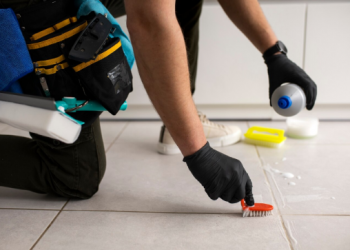Over the last few decades,Power over Ethernet (PoE) has become a pivotal technology in networking and electronics. The demand for PoE and compatible devices is steadily on the rise. Global Industry Analysts, Inc. (GIA) predicts that the global PoE solution market will reach $1 billion by 2024. In this article, we’ll answer some of the most pressing questions about PoE.
What is Power over Ethernet (PoE)?
Power over Ethernet (PoE) is a technology that allows simultaneous transmission of electrical power and data over a single Ethernet cable. PoE is commonly used to power devices like IP cameras, VoIP phones, access points, and other network-connected devices, eliminating the need for separate power cables.
How does PoE work?
PoE injects low-voltage DC electricity into Ethernet cables alongside data signals. Industry standards specify a voltage range of anywhere between 44 and 57V DC, with 48V DC being the most common voltage used in PoE systems. Devices at the receiving end are equipped with PoE-compatible hardware to extract and utilize the electrical power.
What Are the Different Types of PoE?
The Institute of Electrical and Electronics Engineers (IEEE) has defined three standards that categorize PoE into four types based on the level of power delivered. These categories are:
- Type 1: IEEE 802.3af (PoE): This standard provides up to 15.4 watts of power per port.
- Type 2: IEEE 802.3at (PoE+): PoE+ delivers up to 30 watts of power per port, making it suitable for devices like video phones and access points.
- Type 3: IEEE 802.3bt (PoE++): This high-power standard can provide up to 60 watts per port.
- Type 4: IEEE 802.3bt: This high-power standard can deliver up to 100 watts of power per port and is ideal for powering devices with substantial power requirements.
This flexibility means that PoE has a wide range of possible use cases, allowing you to choose the one that best suits your device demands, from primary power delivery to high-power requirements.
Can you mix different PoE standards on the same network?
Mixing different PoE standards on the same network is generally not recommended. Devices may work differently than intended, leading to compatibility issues. If you need to use different PoE standards, we advise that you use separate network segments or switches for each standard.
Are There Concerns About Overheating with PoE?
Type 1 PoE (IEEE 802.3af) and Type 2 PoE (IEEE 802.3at), with maximum power outputs of 15.4W and 30W, respectively, pose minimal risk of overheating. However, the higher-wattage Type 3 (60 W) and Type 4 (100 W) PoE standards pose a greater risk of overheating.
If you intend to use higher-wattage PoE, you can mitigate your level of risk by implementing the following:
- Use CAT6A or CAT7 Cables: These cables are designed to handle increased power levels.
- Larger Conductors: Opt for cables with larger conductors.
- Solid Metal Conductors: Solid metal conductors provide better heat dissipation.
- Shielded Cables: Shielded cables, such as S/FTP or S/UTP, can mitigate heat build-up.
- Small Bundle Sizes: Avoid bundling cables too tightly, as larger bundles can increase core temperatures.
What are the advantages of using PoE?
Using PoE offers several advantages, including:
- Simplified installations: PoE eliminates the need for separate power cables, making installation more straightforward and cost-effective.
- Remote power management: PoE allows for remote power cycling and control of devices, enhancing network management capabilities.
- Improved reliability: PoE systems can include backup power sources, ensuring that essential devices remain operational during power outages.
- Scalability: It’s easy to add and relocate devices without the constraints of power outlet availability.
What devices can be powered using PoE?
A wide range of devices can be powered using PoE, including:
- VoIP Phones.
- IP Cameras and PTZ Cameras.
- Wireless Access Points.
- LED Lighting and Sensors.
- ATMs.
- IP Intercoms and PA Systems.
- Security Card Readers.
- IP Clocks.
- Thin Client Computers.
- Digital Signage.
- Point-of-Sale Kiosks.
- Network Routers and Switches.
- Industrial Control Systems.
What are the key factors to consider when implementing PoE?
When implementing PoE, consider the following:
- Power budget: Ensure that the PoE switch or injector has the required power budget to support all connected devices.
- Cable length: The distance between the PoE source and the powered device can affect power delivery. Use Cat 5e or Cat 6 cables for longer distances.
- Power requirements: Understand the power requirements of your devices and choose the appropriate PoE standard.
- Safety: Ensure the PoE system complies with safety regulations to avoid electrical hazards.
- Network design: Plan your network layout to optimize power distribution.
What’s the Maximum Cable Length for PoE?
The standard maximum cable length for Ethernet is 100 meters (328 feet).
Can You Extend the Cable Length?
Yes. APoE extender can expand your network’s reach to 4,000 feet (1.2km). This type of expansion is particularly useful for large-scale deployments like hotels, shopping malls, campuses, and sports arenas.
Are there any safety concerns with PoE?
While PoE is generally safe when installed correctly, there are safety concerns to be aware of. Overloading a PoE switch or injector, using improper cabling, or neglecting safety precautions can lead to electrical hazards. Follow safety guidelines and use certified PoE equipment from reputable manufacturers to mitigate these risks.
Can PoE be used in outdoor installations?
Yes, you can use PoE in outdoor settings, but it’s crucial to use weatherproof and ruggedized PoE equipment designed for outdoor use. Taking this step will ensure your equipment can withstand inclement weather and extreme temperatures.
Can a PoE Network Support Both PoE and Non-PoE Devices?
Yes, PoE does not disrupt the operation of a standard switch. You can connect both PoE and non-PoE devices to the same switch. Many PoE switches are also designed to disable PoE for non-PoE-compatible devices, enhancing energy efficiency automatically.
What is the future of PoE?
The future of PoE looks promising, with continued advancements in technology and standards. As the demand for higher power levels and more efficient PoE systems grows, we expect further developments in this area. Emerging technologies like 5G, smart buildings, and IoT are on the horizon for increased adoption.
PoE is a versatile solution for delivering electrical power to network devices. This technology can offer numerous benefits, making it an ideal choice for a diverse array of business applications.
Versa Technology is an IT networking company and a global leader in the supply ofPoE switches. Our PoE switches are used across dozens of countries and on every continent, all thanks to our cutting-edge technology and the increased efficiency we can offer.















